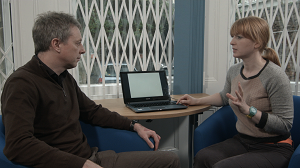What is working memory?
When we measure working memory, we measure the ability to keep information in mind in the face of distraction. We use this ability all of the time in every day life. For example, trying to remember a phone number while a toddler is shouting for attention, or trying to remember a shopping list when you bump into an old friend.
Children use working memory in the classroom. They need to retain important information, such as instructions from the teacher, in the face of distractions from classmates, wall displays, noises outside, and thoughts and feelings.
In our first film, Professor Chris Jarrold introduces the concept of working memory, and why it is important in a classroom setting. Tasks are demonstrated by Dr Debbora Hall, we have used them to help deconstruct working memory into component parts. Dr Rachael Hayes, an educational psychologist (North Somerset Council), speaks about her recent experiences of children with working memory difficulties at school.

The factsheet goes into a little more detail on some of the concepts introduced in this video, and provides references and further reading.
Download the factsheet: WM factsheet 1 (PDF, 451kB)
Please email us to be added to a mailing list for updates on our resources.
contact: w-memory@bristol.ac.uk